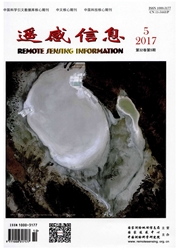

 中文摘要:
中文摘要:
通过对东北积雪实验观测数据和HUT(the Helsinki University of Technology)积雪-冰-水层模型模拟数据的比较分析,描述了积雪-冰-水系统的发射率特征。并于2010年1月21日~22日在吉林省松原市的松花江进行了积雪辐射计观测试验,通过对湖冰上的积雪的亮温观测和HUT模型模拟的亮温比较结果来看,HUT模型在各个角度下模拟亮温与实测亮温均较吻合,其中模拟的水平极化亮温的拟合结果要好于垂直极化的结果。HUT模拟和地面测量结果的水平极化的拟合度——R2为0.9316,垂直极化的R2为0.9194。通过地面观测数据,本文分析了湖冰对现有被动微波反演积雪算法的影响,利用HUT模型进行了雪层厚度和冰层厚度对当前雪水当量反演所用的亮温差的敏感性分析,发现当前的雪水当量反演算法对冰层厚度非常敏感,尤其在冰层比较薄的情况下,要精确获得富湖泊区的雪水当量,还需要更进一步的研究。
 英文摘要:
英文摘要:
In this work,we chose the Helsinki University of Technology(HUT) snow emission model to characterize the emission behavior of snowpack-ice-water system with the ground microwave radiometer observation.The snow and lake ice surveys were conducted in Songhua river,Songyuan city,Jilin Province,on Jan.21-22,2010.Compared to the ground measurements over shallow snow-covered lake surface,the simulated brightness temperature at horizontal polarization was better than that at vertical polarizations.The R2 of the HUT simulation and measured value was 0.9316 at H-pol.and 0.9194 at V-pol.respectively.Further,we investigated the impact of lake on snow retrieval using a passive microwave remote sensing and these ground-based observations.Finally,we took a sensitivity analysis of ice thickness and snow depth using HUT model on the show and found that the current brightness temperature difference snow retrieval algorithm was very sensitive to the ice thickness,especially in the case of thinner ice.It required to make more studies in the lake-rich area to improve the snow estimation accuracy.
 同期刊论文项目
同期刊论文项目
 同项目期刊论文
同项目期刊论文
 Comparison of the classification accuracy of three soil freeze-thaw discrimination algorithms in Chi
Comparison of the classification accuracy of three soil freeze-thaw discrimination algorithms in Chi Estimation of effects of a freezing environment on vegetation using model simulation and a truck-mou
Estimation of effects of a freezing environment on vegetation using model simulation and a truck-mou Effects of spatial distribution of soil parameters on soil moisture retrieval from passive microwave
Effects of spatial distribution of soil parameters on soil moisture retrieval from passive microwave 期刊信息
期刊信息
